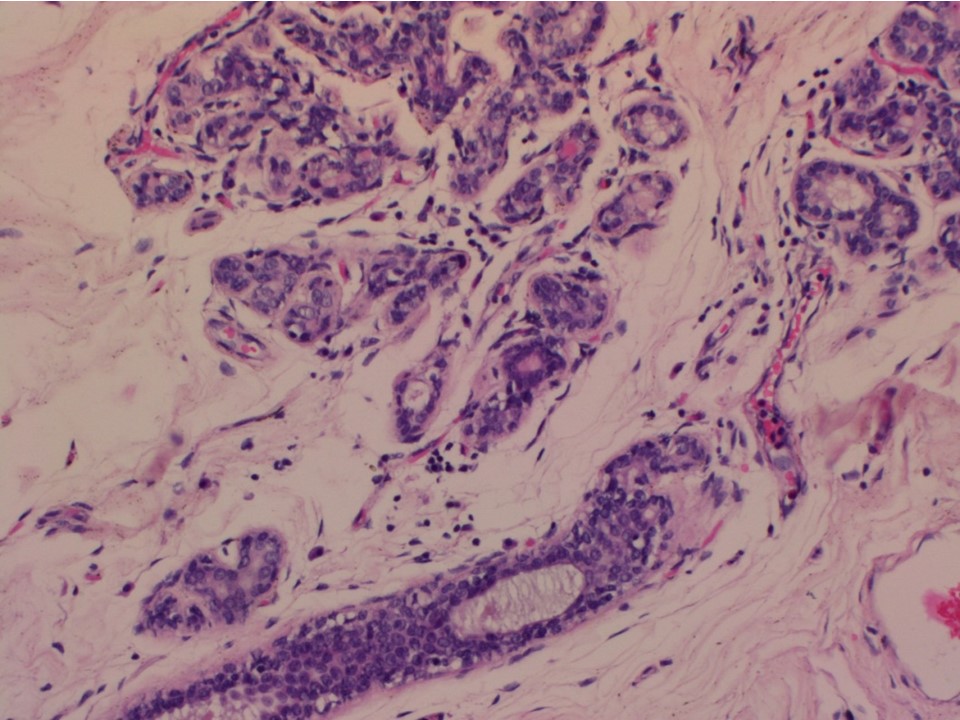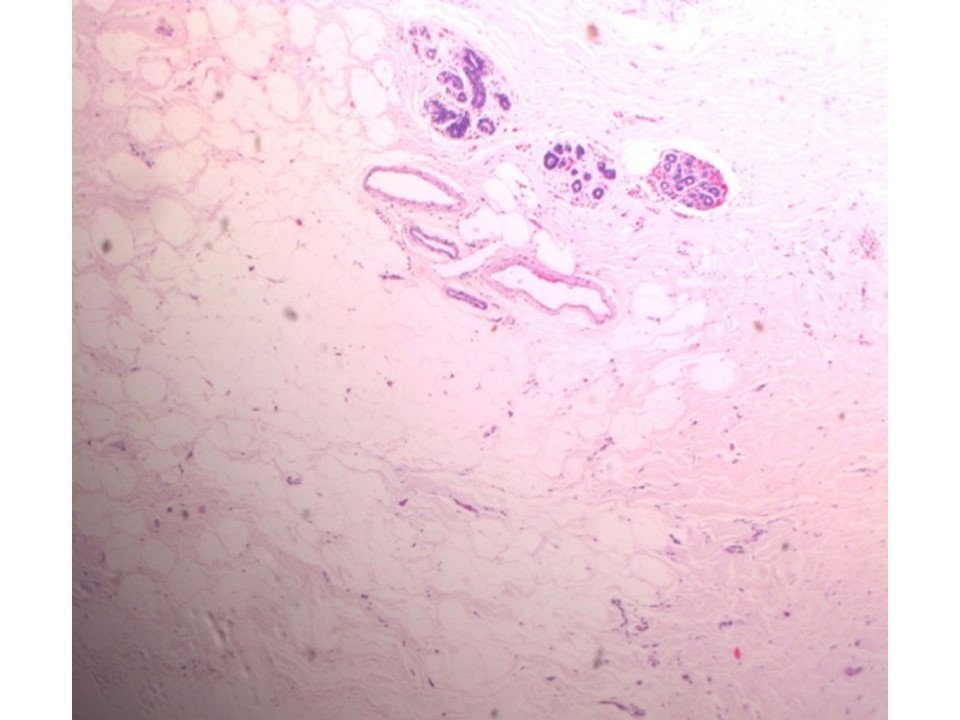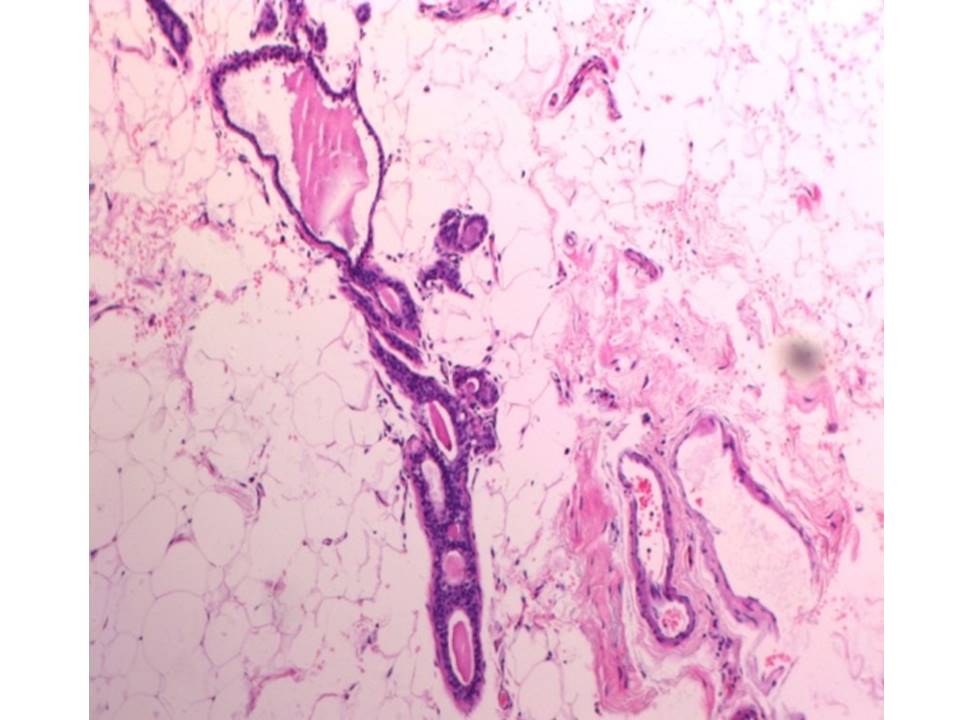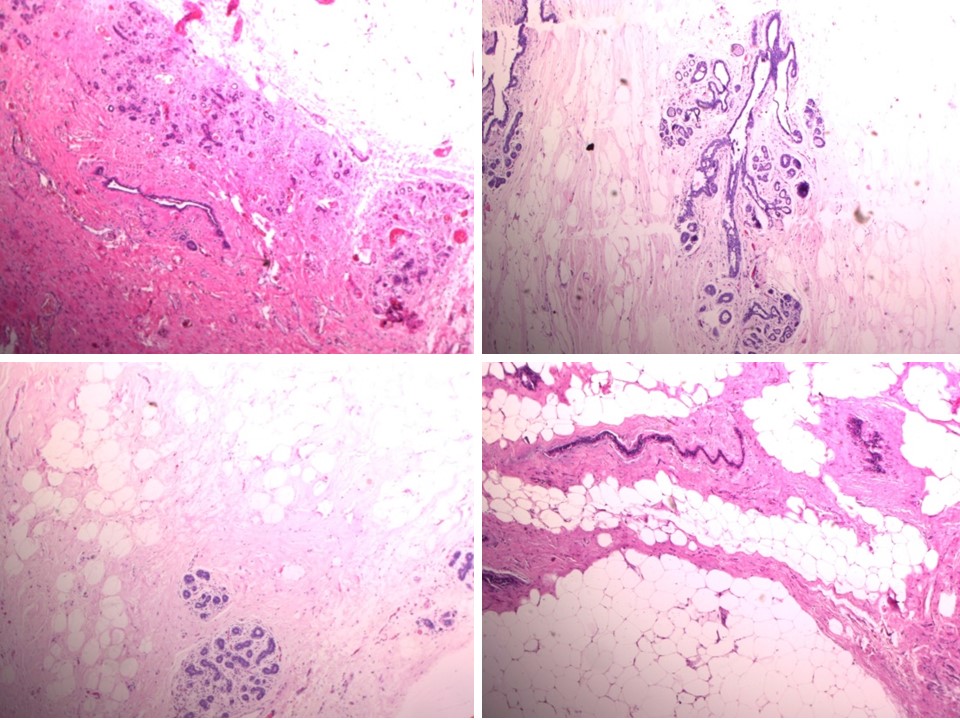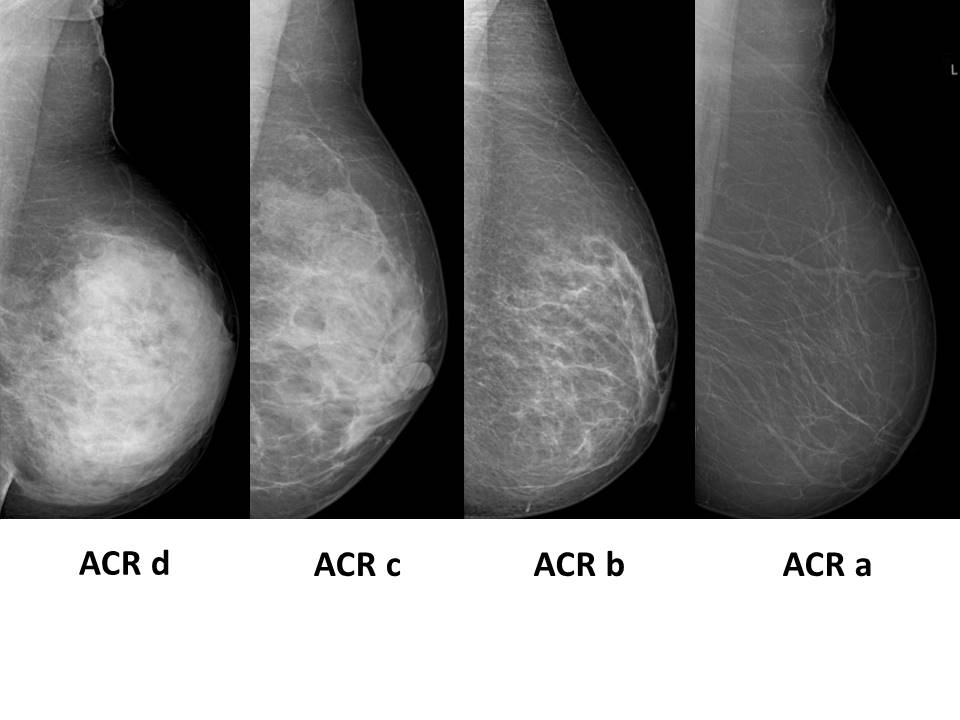Home / Training / Manuals / Atlas of breast cancer early detection / Learning
.png)
Click on the pictures to magnify and display the legends

Click on this icon to display a case study
Atlas of breast cancer early detection
Filter by language: English / РусскийAnatomy of the breast – Changes in the breast with ageing |
The relative proportions of epithelial and stromal tissue in the breast alter significantly with age. In young women, the breast is rich in glandular tissue and the stromal tissue is well developed. With advancing age, estrogen and progesterone secretions decrease, which causes involution of breast tissue. The involuted breast predominantly contains fatty and fibrous tissue and atrophic lobules. The atrophied lobules may dilate with fluid, which leads to the formation of cysts. If an individual duct gets blocked, its walls may thicken and the duct becomes wider, resulting in a condition known as duct ectasia. This is a change in the breast that is more common during menopause. Progressive age-related changes, from dense glandular breasts in young women to almost entirely fatty breasts in older women, occur through the lifespan of a woman. The fatty breast parenchyma of older women gives clearer mammographic images than the dense glandular parenchyma of younger women. The predominantly fat-containing breasts in older women become softer and become more pendulous because of the stretching of the suspensory ligaments. Age-related changes in breast – progressive involution of breast parenchyma Age-related loss of elasticity of breasts For more details about clinical breast examination (CBE) continue to the next page or explore the case studies. |
Click on the pictures to magnify and display the legends
Click on this icon to display a case study
25 avenue Tony Garnier CS 90627 69366, LYON CEDEX 07 France - Tel: +33 (0)4 72 73 84 85
© IARC 2025 - Terms of use - Privacy Policy.
© IARC 2025 - Terms of use - Privacy Policy.




